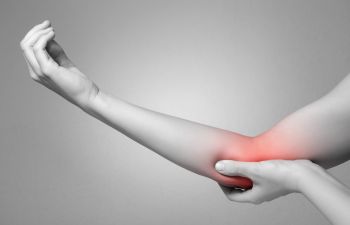A bone spur (osteophyte) is a bone outgrowth that forms at the end of a bone, usually in a joint with inflammation due to injury or another condition like osteoarthritis and tendonitis. It is the body’s way of attempting to heal damage. The “repair” procedure results in the formation of bone lumps because your body thinks your bone is damaged, so it tries to fix it by adding more bone to the area.
Bone spurs typically form on hands, elbows, shoulders, the neck, spine, hips, knees, ankles and heels, because those are the most often used joints.
Bone Spur Causes and Symptoms
Bone spurs are a frequent side effect of aging (wear and tear). Other causes include overuse, obesity, diet and genetics.
Many people live with bone spurs unknowingly for years before they cause any pain or joint dysfunction. When there is pain, it is caused by friction against adjacent bones, muscles, tendons or nerves. When there is joint dysfunction, it could be a mild stiffness, moderate restricted movement or total loss of mobility.
In addition, bone spurs can break off and become loose bodies, which can lock up a joint, making it difficult to move.
Other symptoms include:
- Weakness, numbness or tingling (caused by a bone spur pressing on nerves in your spine)
- Muscle weakness, spasms or cramps
- Bumps under your skin (commonly seen in the hands and fingers)
- Trouble controlling your bladder or bowels (very rare)
Your symptoms may worsen when you move the affected joint or exercise.
Bone Spur Prevention
You cannot completely prevent bone spurs, but you can take these precautions to avoid things that cause them. For example, regular exercise, maintaining a healthy weight, wearing supportive footwear and eating nutritious foods high in calcium and Vitamin D are all great ways to prevent conditions that lead to bone spurs.
Low-impact exercises like swimming and bicycling are great for joint health, and weight-bearing workouts like stair climbing keep bones strong. In addition, you may prevent damage that leads to bone spurs if you catch arthritis early on by visiting Shoulders & Knees Orthopedics in NYC or Westchester if you have any signs of joint trouble.
Bone Spur Treatment
Treatment or surgery can bring relief when bone spurs cause pain or inhibit function. Non-invasive options include cortisone injections and physical therapy. However, if those methods are ineffective, you may require arthroscopic (“keyhole”) surgery to remove the bone spur(s) and/or loose bodies.
The surgery is minimally invasive. It requires only a tiny incision to access the joint and remove whatever is causing joint aggravation. Afterward, you will need physical therapy to regain joint strength and range of motion.
Dr. Struhl is a respected orthopedic surgeon who offers bone spur treatment. Contact Shoulders & Knees Orthopedics to schedule a consultation today.




